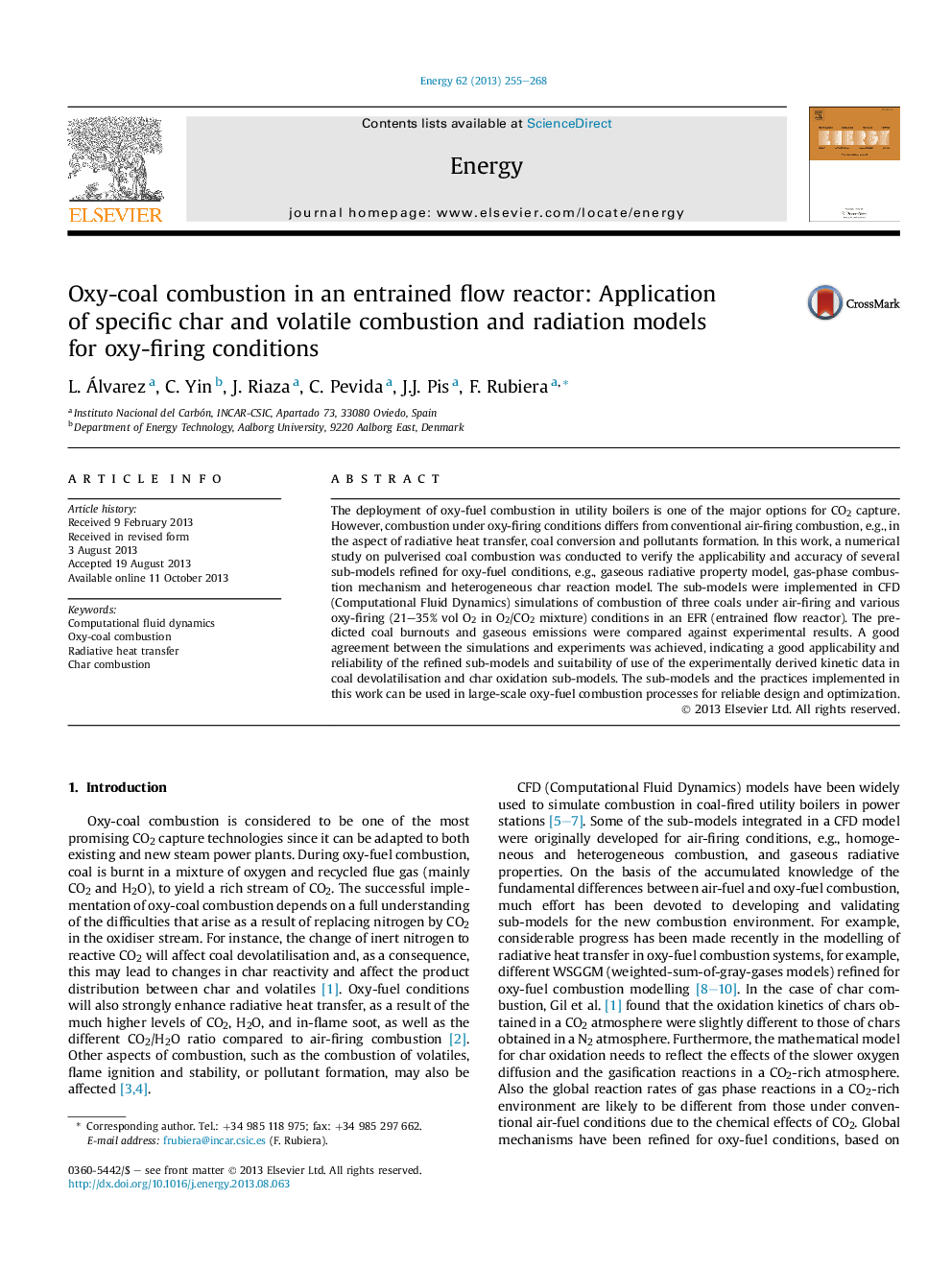| Article ID | Journal | Published Year | Pages | File Type |
|---|---|---|---|---|
| 1732756 | Energy | 2013 | 14 Pages |
•CFD (computational fluid dynamics) modelling predicted overall combustion and emissions under air- and oxy-firing conditions in an EFR.•Sub-models originally developed for air-firing were adapted for oxy-fuel combustion.•A very good agreement between simulation results and experimental data was achieved.•The refined JL 4-step global mechanism for gas-phase combustion improves flame temperature prediction.•Non-gray calculation of an appropriate oxy-fuel WSGGM is recommended to improve simulations of oxy-fuel combustion processes.
The deployment of oxy-fuel combustion in utility boilers is one of the major options for CO2 capture. However, combustion under oxy-firing conditions differs from conventional air-firing combustion, e.g., in the aspect of radiative heat transfer, coal conversion and pollutants formation. In this work, a numerical study on pulverised coal combustion was conducted to verify the applicability and accuracy of several sub-models refined for oxy-fuel conditions, e.g., gaseous radiative property model, gas-phase combustion mechanism and heterogeneous char reaction model. The sub-models were implemented in CFD (Computational Fluid Dynamics) simulations of combustion of three coals under air-firing and various oxy-firing (21–35% vol O2 in O2/CO2 mixture) conditions in an EFR (entrained flow reactor). The predicted coal burnouts and gaseous emissions were compared against experimental results. A good agreement between the simulations and experiments was achieved, indicating a good applicability and reliability of the refined sub-models and suitability of use of the experimentally derived kinetic data in coal devolatilisation and char oxidation sub-models. The sub-models and the practices implemented in this work can be used in large-scale oxy-fuel combustion processes for reliable design and optimization.
